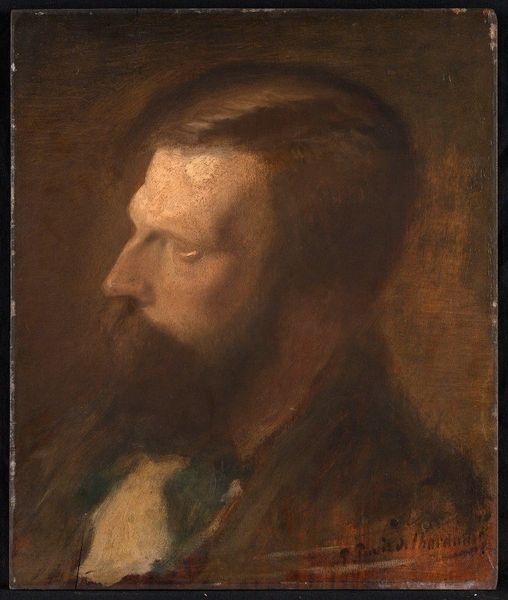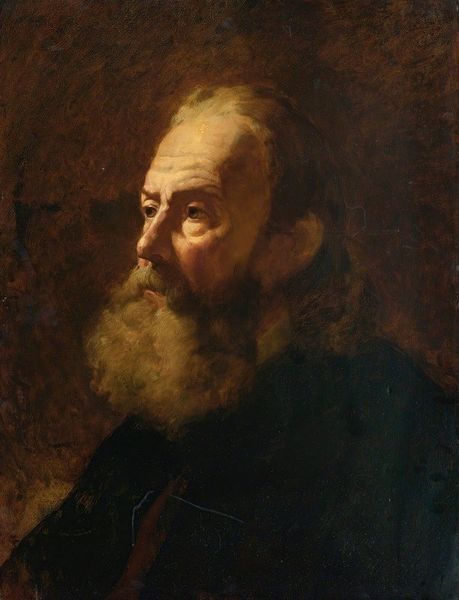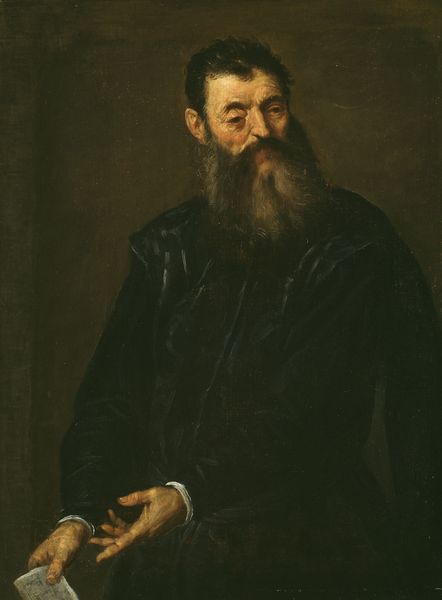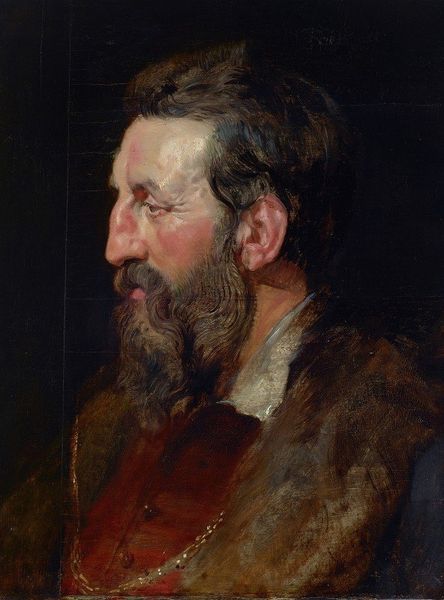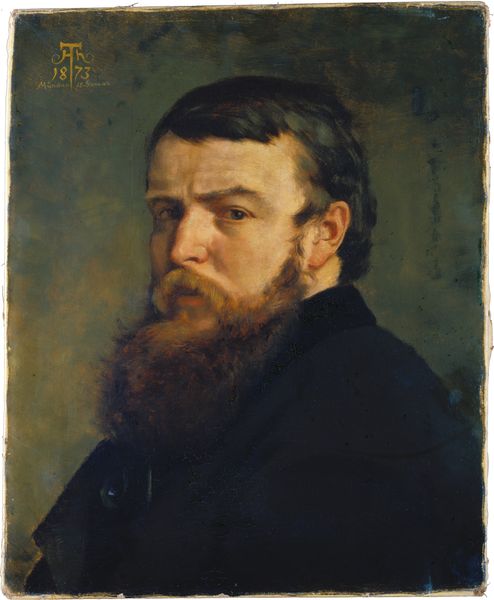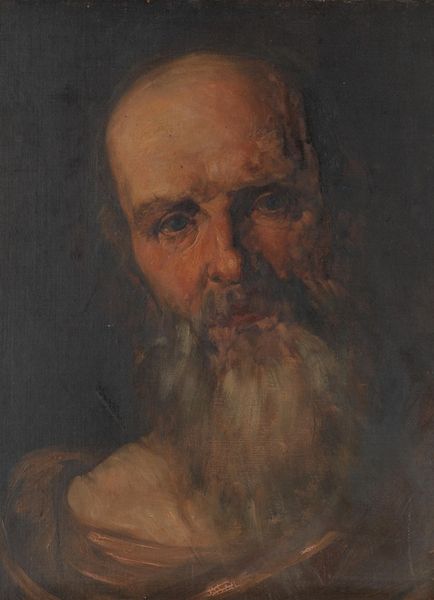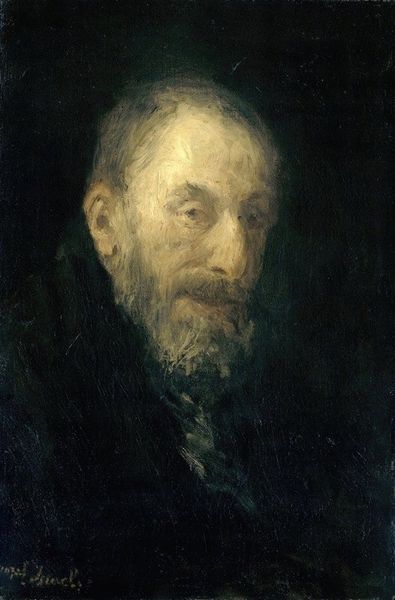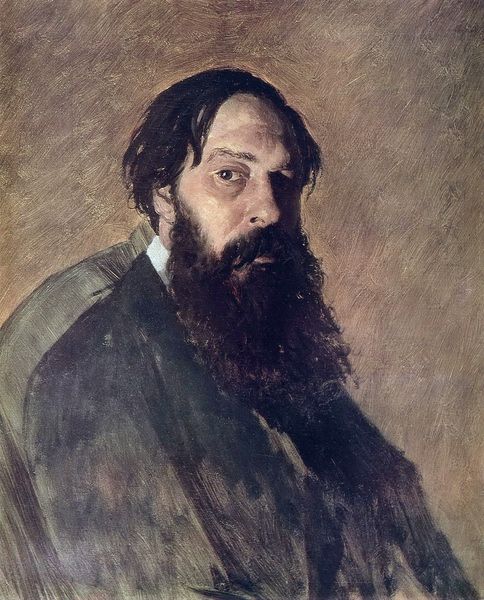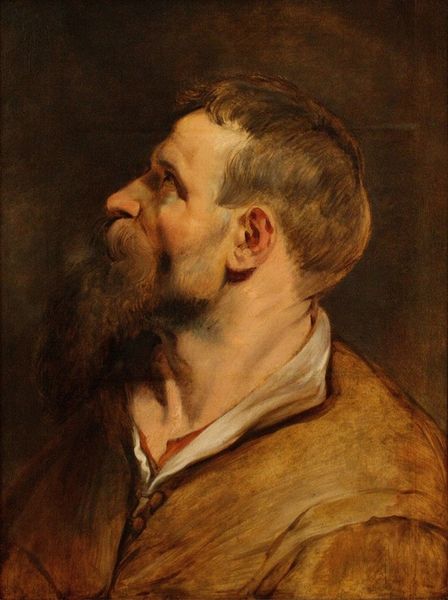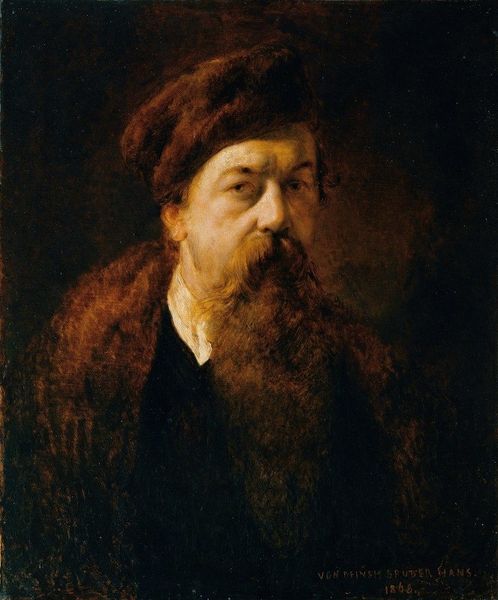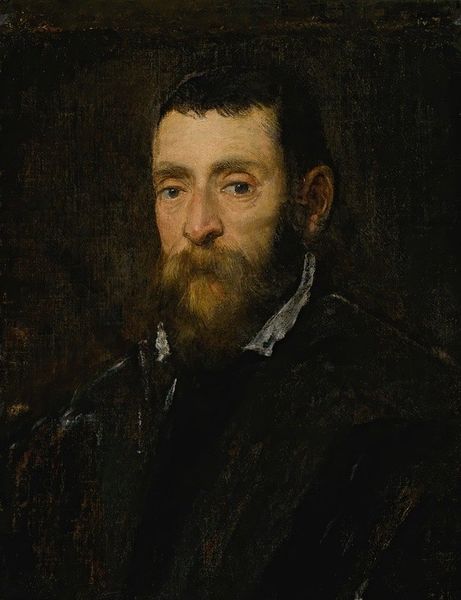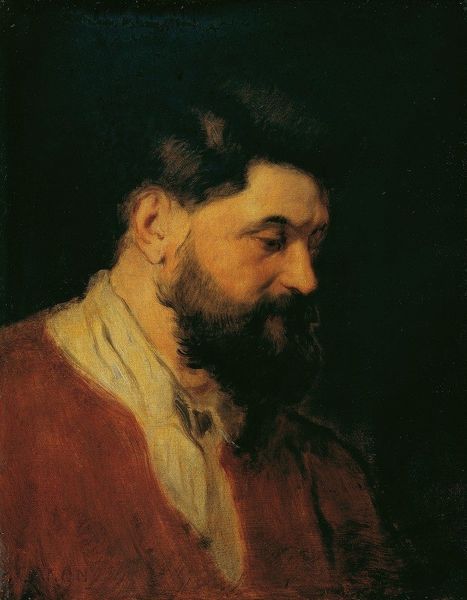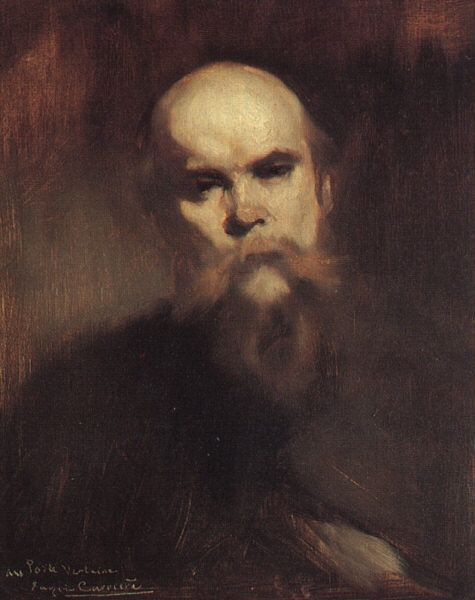
oil-paint
#
portrait
#
self-portrait
#
impressionism
#
oil-paint
#
charcoal drawing
#
oil painting
#
realism
Dimensions: 72.4 x 52.4 cm
Copyright: Public domain
Editor: This is a captivating oil painting, a portrait of Auguste Rodin by John Singer Sargent, created around 1884. It’s moody; Rodin emerges from the darkness. The details of his face and impressive beard are brought into focus, but his clothes melt away into the background. What stands out to you? Curator: Immediately, the power of the gaze grabs my attention. It’s not confrontational, but rather conveys a depth of thought and introspection. Think about the beard, a prominent symbol of masculinity and wisdom, anchoring him in time but also acting as a screen, obscuring and safeguarding the internal self. Consider how facial hair has signified status or intellect across many different cultures and epochs. What do you think Sargent is conveying by emphasizing it here? Editor: That’s a great point, his beard definitely emphasizes a timeless feeling and makes him appear wise, but also perhaps inaccessible? How would this painting have been received when it was made, compared to now? Curator: Absolutely, think about the cultural reverence for artists in the late 19th century; Sargent elevates Rodin to almost a mythical status. Note also the careful highlighting and shadowing – a very studied realism in contrast to the then-emerging impressionistic landscapes that often lacked portrait sittings. The darker tones allow viewers to really linger on his face. What lasting impression do you think such techniques create? Editor: It feels timeless. Almost as if the techniques themselves are a tribute to tradition, even as Sargent was participating in newer artistic movements. Thank you! It’s like Sargent captured Rodin not just as a man, but as an embodiment of artistic legacy. Curator: Exactly! And it makes you wonder about the conversation *they* had about legacy while painting!
Comments
No comments
Be the first to comment and join the conversation on the ultimate creative platform.
